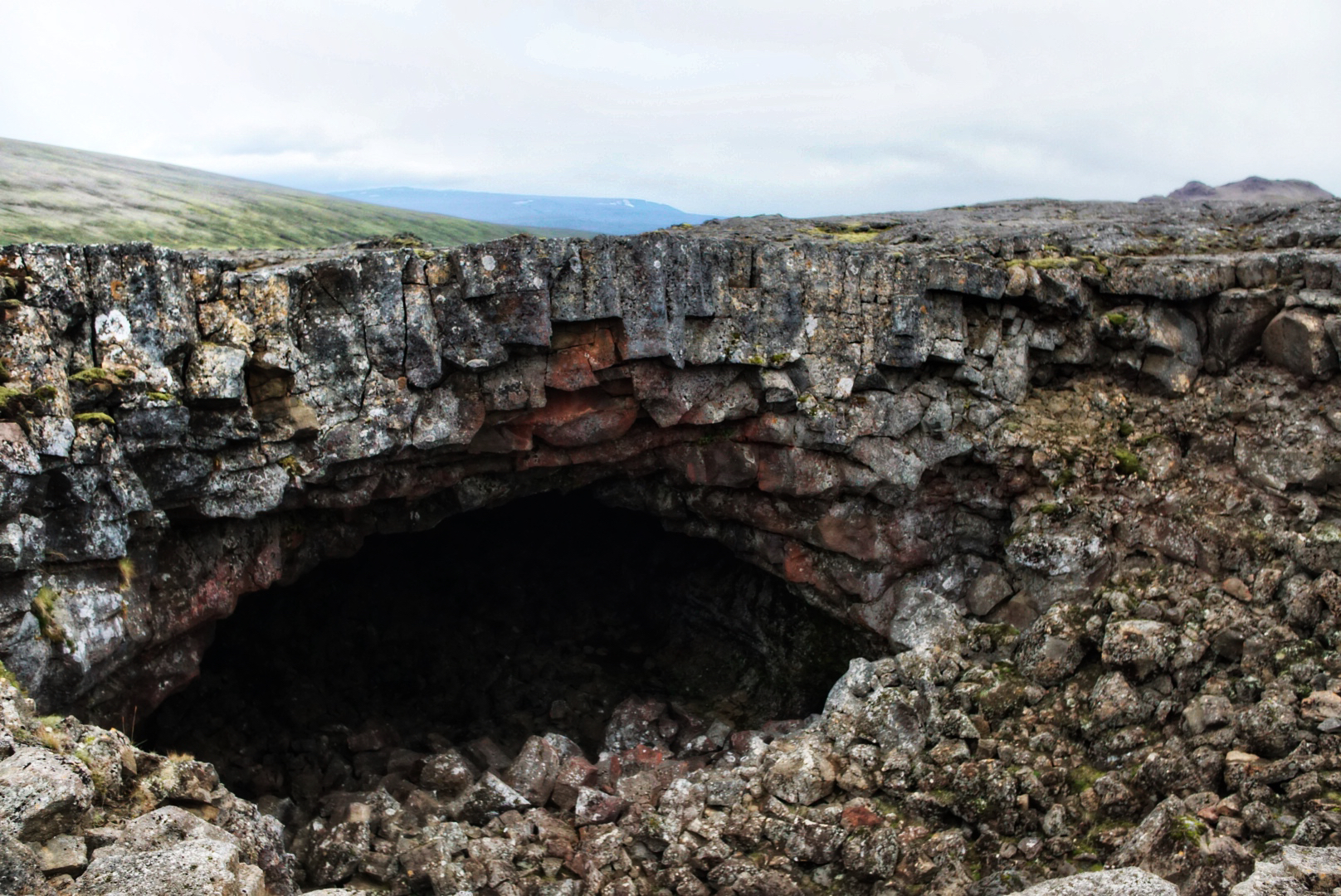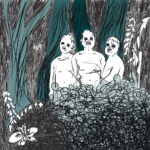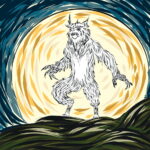Surtshellir is a rather unusual Viking Age Icelandic site, and one of the most fascinating places in Iceland. Surtshellir is essentially a lava tunnel which has bisected an older lava tunnel, thus forming the twin “caves” Vígishellir. (‘Fortress Cave’) and Beinahellir (‘Bone cave’). The caves are shrouded in a cloak of mystery, enhanced by the oral stories handed down from generation to generation. The name, archaeological features and literary sources paint a fascinating picture of the site and the lives lived there.
The fire giant Surt (Old Norse: Surtr) is said to have been the very first inhabitant of the cave—hence the name. Surt came from Múspellsheim, the realm of flame, where he was the guardian of fire. It is said that he will ride during Ragnarök to scorch the earth with his flaming sword. When he rides over Bifröst, the bridge connecting Midgard and Asgard, it will break. Surt then battles the Norse pantheon and in a close battle with Frey he is injured, but not before splitting Frey in two. When his flaming sword ultimately sets fire to the earth and destroys all life, Surt himself succumbs as well.
But how does he connect to this Icelandic cave? Throughout history, Surtshellir has been mentioned multiple times in the Icelandic texts and sagas. Landnámabók (the “Book of Settlement”, a history of the initial settlement of Iceland, 12th c. AD) tells about how Surt was the first to live here, an association probably inspired by early Icelanders witnessing the cave’s formation by volcanic activity in the 870s AD. Landnámabók further describes how in the 10th century a band of outlaws started using the cave as shelter—however, they were killed in an ambush by local farmers. Harðar’s Saga (14th c. AD) mentions a band of outlaws using the cave as shelter as well. In Sturlunga Saga, Surtshellir is mentioned as the place where the son of Snorri Sturluson was taken whilst he was kept captive, to be castrated and blinded ‘on top of the fortress’—which could be a fortification wall or the part of Surtshellir known as Vígishellir (‘fortified cave’). The last written source mentioning outlaws living in Surtshellir is Hellismanna Saga (19th c. AD) which summarises all previous literary sources regarding outlaws.
In 2001, a joint archaeological project between Brown University, California and the National Museum of Iceland was started at Surtshellir. Within the cave system, the remains of fortifications, a subterranean house, bone midden, and occupational deposits can be found, which may be seen as archaeological attestation of the inhabitants listed above (except, perhaps, Surt himself).
The most intriguing part of Surtshellir is Vígishellir (“fortress cave”). In Vígishellir there are two man-made structures, both of which were investigated during the 2001 excavation.
Structure A is a peculiar arrangement of stones measuring 7 metres long, 3.5 metres wide at its widest point, and 1.5 metres at the narrower ends. It is an oval enclosure which, interestingly enough, closely resembles a Viking Age hall in its layout. In the eastern end of the structure there is a compartment built into the wall, and in it the archaeological investigation found charcoal, indicating that the compartment has been used as a fireplace. However, written sources from the 18th century mention that there are no traces of a fireplace, suggesting that this particular use of the cave is a recent event. Most likely, some cold tourists in the last 250 years saw an opportunity to take shelter and warm up.
Very little debris was found on the floor in the structure; in the eastern part, a thin, greyish floor layer, appearing to be a mix of burnt bone gravel and charcoal, as well as lithic flakes (probably used to start a fire) were found. To the south of the structure, just outside of the entrance, there are traces of a floor slab. This reaches all the way to the southeast side of the structure. Except for these, there seems to be no other occupational layer in the cave. There is thus the possibility that Structure A is actually the oldest still-standing Viking Age structure in the world!
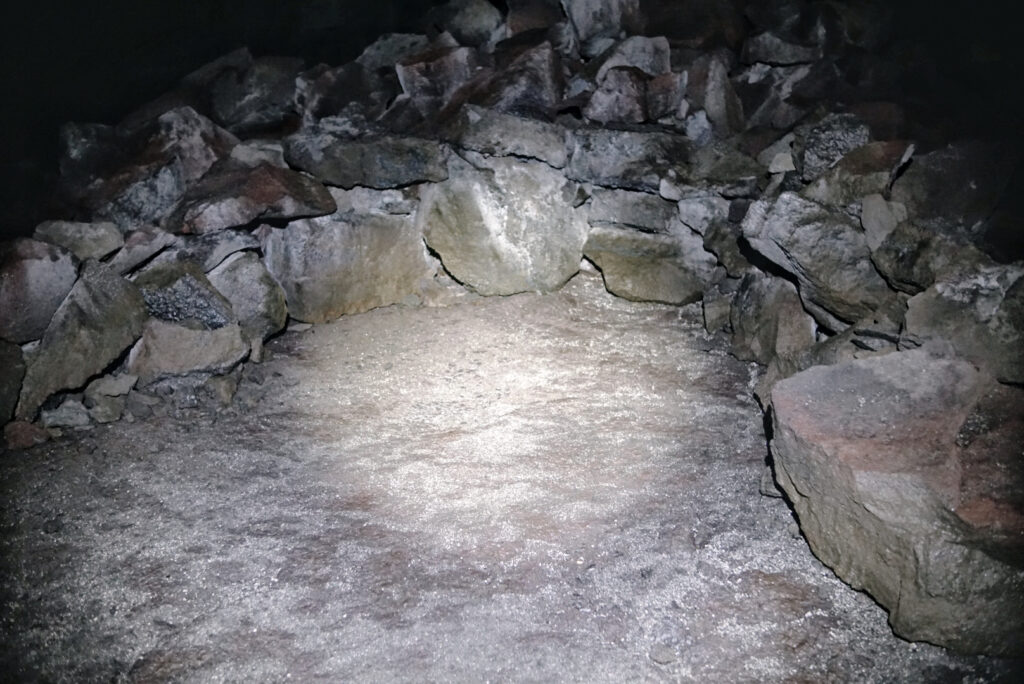
Structure B is a bone midden to the side of Structure A, measuring 3.5 metres long and 2 metres wide, and protected by a row of stones. According to locals, the stone wall was put up in more recent times to protect the bone midden, as it is located right next to a footpath leading into the enclosure. During the excavation of the cave, the midden was only roughly 3-7 cm thick—travellers over the last 250 years have taken pieces of bone with them, and thus the midden, once as “tall as a man”, has now shrunk. During the 2001 field season, around 7500 bones were collected and analysed from the midden. Carbon dating was used on samples from both the top and the bottom layers to find the earliest and latest dates of the bone deposits. This analysis aged the bones between 690–960 AD, but since the bones came from a lava cave that didn’t exist until shortly after 871 AD, it is clear that they must be from the latter part of the time frame.
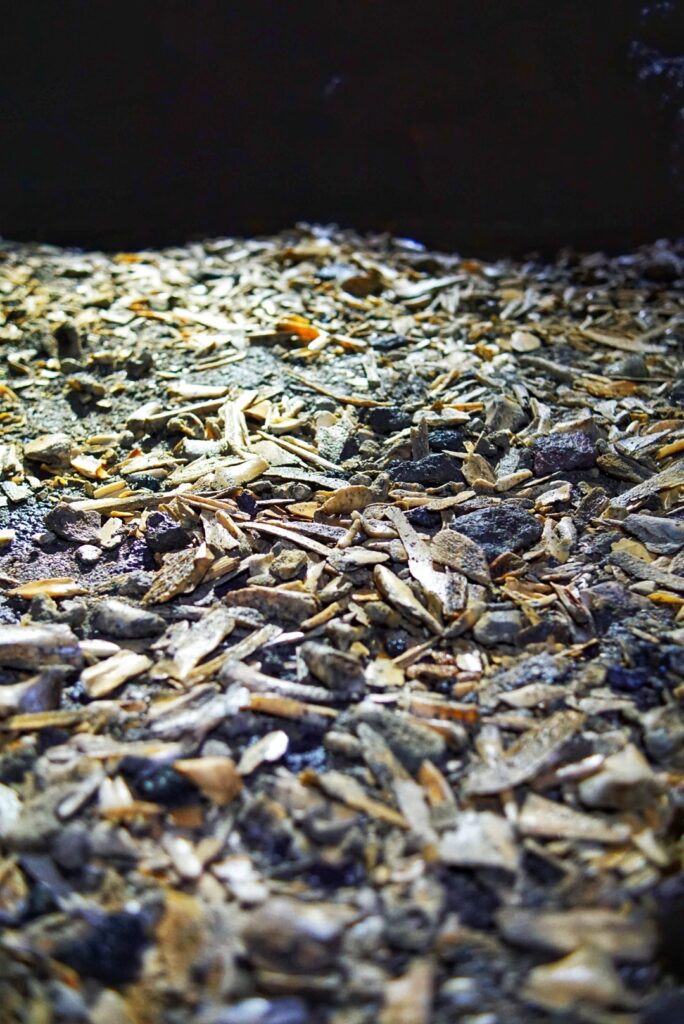
This project revealed that in Vígishellur there are thousand-year-old relics that are unique in their kind—and it is impossible to call this structure anything other than a house. There are no other known examples of almost an entire house being built underground in this way in other caves, although in many other caves various structures can be found. Fireplaces and remains of food unequivocally indicate that this was the dwelling of the people who built this structure into the cave. It can be assumed that the house was built and in use at the same time as the bones that are in it and around it. The dating of the bone remains should therefore be a good measure of how old the house is, giving us a period of about 70 years from around 890–960 AD. All this is supported by literary sources telling about outlaws and the use of Surtshellir in the late 9th and 10th centuries.
There are different theories about what was going on in Surtshellir; some claim human occupation, and some claim ritual. Until further research has been carried out many things regarding Surtshellir remain uncertain—but one thing is for sure, outlaws certainly do love caves.
Text and photos: Anna Sunneborn Guðnadóttir. Copyright 2021 Scandinavian Archaeology.
Further reading:
Ólafsson, G., Smith, K. P., and Stefánsdóttir, A. (2004) Rannsókn á minjum í Surtshelli. Rannsóknaskýrslur Þjóðminjasafns 2001.
About the author

Anna Sunneborn Guðnadóttir
Archaeologist with a bachelor in archaeology from Uppsala University (Sweden), a Masters from University College London (UK), and a Masters from Uppsala University (Sweden).
During my masters studies I focused on the archaeometric side of archaeology - mainly Geographic Information Systems, geoarchaeology and optical microscopy. In my MA dissertation at UCL I used micromorphology and ceramic petrography to attempt to trace ancient artefacts to its manufacturing location based on modern soil samples and literary sources. My MA dissertation at Uppsala University was a digital analysis of a settlement based on the ceramics found during excavation.
I have a love for all things stratigraphy and geoarchaeological, and can often be found looking at stratigraphy wherever I can find it.
